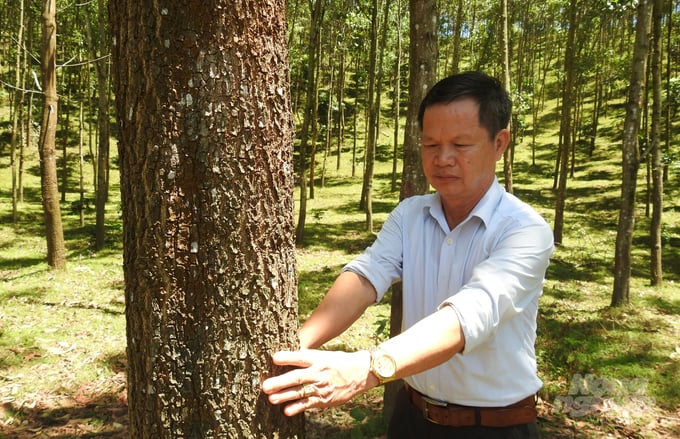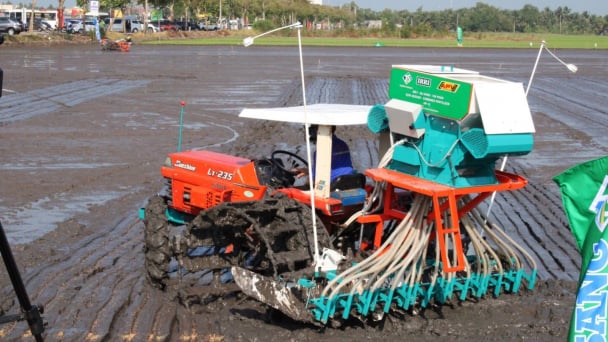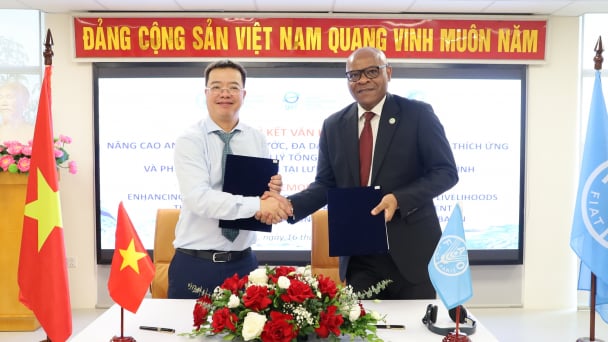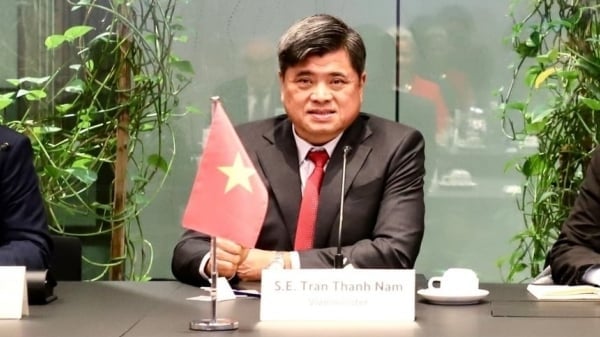May 21, 2025 | 06:17 GMT +7
May 21, 2025 | 06:17 GMT +7
Hotline: 0913.378.918
May 21, 2025 | 06:17 GMT +7
Hotline: 0913.378.918
Agriculture, forestry, and land use play a crucial role in the strategy for reducing greenhouse gas emissions, ensuring Vietnam's commitment at COP26 to reach net zero by 2050.
According to the results of the Department of Climate Change's (Ministry of Natural Resources and Environment) review of Vietnam's emission reduction contributions to 2030, the agricultural sector has the potential to unconditionally contribute 12,4 million tons of CO2e (a unit for measuring greenhouse gas emissions) to the emission reduction. In addition, with the support of international organizations, our country has the potential to reduce an additional 38.5 million tons of CO2e and make a conditional contribution to the emission reduction of 50.9 million tons of CO2e.

For the first time, the forestry sector is paying for forest carbon credits through the North Central Region Emission Reduction Program. Photo: Kim Anh.
To date, the country has participated in 254 Clean Development Mechanism (CDM) initiatives, which have reduced greenhouse gas emissions by approximately 140 million tons of CO2e.
The forest industry implemented forest carbon credit payments for the first time through the Emission Reductions Payment Agreements (ERPA) Program. The World Bank (WB) has supported the program's implementation from 2014 to the present in terms of capacity, policies, and techniques related to measurement, computation, and evaluation activities.
The ERPA Program is implemented in six provinces in the North Central region, including Thanh Hoa, Nghe An, Ha Tinh, Quang Binh, Quang Tri, and Thua Thien-Hue, with a total transaction volume of 51 million tons of CO2e.
Through calculation, measurement, monitoring, and reporting based on forest inventory and investigation data, Mr. Nguyen Chien Cuong (Vietnam Forest Protection and Development Fund) provided estimated results of emission reduction for the period 2018-2019 for the entire North Central region, which was 10.3 million tons of CO2e, paid for by the WB in the amount of 41 million USD, and ready to be listed on the world carbon credit exchange.

Mr. Tong Xuan Chinh, Deputy Director of the Department of Livestock (Ministry of Agriculture and Rural Development) said that Vietnam must soon shape a carbon finance mechanism. Photo: Kim Anh.
Mr. Nguyen Chien Cuong stated, however, that payments have not yet been made due to regulations regarding the publication of a guide on how to measure carbon credits and distribute benefits among related parties.
The livestock industry is one of the sectors with the highest emission levels, with an average of over 60 million kilograms of solid waste produced annually. Therefore, treating waste to both protect the environment and create technological solutions and generate carbon credits is regarded an important issue by Mr. Tong Xuan Chinh, Deputy Director of the Department of Livestock Production (Ministry of Agriculture and Rural Development).
By 2020, the program will have begun selling carbon credits, generating more than 170 billion VND. Due to the absence of institutions for the administration, accumulation, and expenditure of capital for the commercialization of carbon credits, the proceeds have not been distributed to the appropriate parties.
Mr. Chinh determined that the carbon credit market is swiftly expanding. The market for commercialized carbon credits will reach 84 billion USD by 2022. Vietnam must therefore act swiftly to gain access to the carbon credit market in order to seize significant opportunities.

Mekong Delta farmers build biogas tanks. This is a very effective solution to help reduce emissions in livestock farming. Photo: Kim Anh.
Recently, at a workshop on agricultural carbon markets co-organized by units under the MARD in collaboration with the International Rice Research Institute (IRRI) in Can Tho City, the phrase "carbon credits" became a topic that attracted the attention of many domestic management agencies as well as parties involved in the rice value chain.
Dr. Katherine Nelson, a climate change scientist and carbon market expert at IRRI Vietnam, shared with the press that Vietnam is committed to reducing global methane emissions, with a target of a 30% reduction by 2030. The preponderance of methane emissions originates from agriculture, particularly rice production.
However, the legal framework for the carbon market in the rice sector is still being developed in order to have a comprehensive operating policy, including the construction of a process, the definition of standards, reporting and measuring instruments, and the identification of carbon market access priorities in the rice sector.

A technology system is needed to report, measure, and identify carbon market access priorities in the rice sector. Photo: Kim Anh.
Comparing agricultural sectors, the potential for reducing greenhouse gas emissions is significantly greater for rice (36%) than for livestock (9%) and cultivation (3%).
In the Mekong Delta region, initiatives and programs have been and are being implemented to promote sustainable rice production and reduce greenhouse gas emissions. However, there are currently insufficient optimal methods for measuring greenhouse gas emissions from rice production.
Vietnam must implement science and technology in order to reduce emissions and establish a carbon market. Alternate Wetting and Drying (AWD) technology, which reduces the quantity of irrigation water on rice fields, allows producers to save up to $150 USD per hectare without sacrificing crop yield.

Dr. Katherine Nelson, climate change scientist and carbon market expert at IRRI, shares about the rice industry's carbon emission reduction certification roadmap. Photo: Kim Anh.
Since 2016, the Dutch Development Organization in Vietnam (SNV Vietnam) has implemented programs to promote the implementation of sustainable agricultural solutions and reduce emissions in Thai Binh province. SNV Vietnam will continue to expand implementation in An Giang, Dong Thap, and Kien Giang through the project "Transforming the rice value chain for sustainable development and climate change adaptation in the Mekong Delta" from 2023 to 2027.
The objective of the Project is to improve livelihoods and support rice producers in converting to climate change-adaptive and low-carbon rice production, intending to strengthen the policy framework to promote the production and trade development of low-carbon rice brands.
Translated by Linh Linh

(VAN) In 2024, over 295 million people across 53 countries and territories faced acute hunger—an increase of almost 14 million people compared to 2023, while the number of people facing catastrophic levels of hunger reached a record high.

(VAN) World Environment Day 2025 (June 5) carries the theme 'Beat Plastic Pollution' continuing to emphasize the global urgency of addressing the plastic waste crisis.

(VAN) This was the assessment shared by experts at the workshop titled 'Assessing the Role and Potential of Low-Emission Rice Production Systems in Vietnam,' held on the morning of May 19.

(VAN) Cai Rong Port is the fisheries control center of Quang Ninh, helping to monitor fishing vessels, combat IUU fishing, and remove the EC's 'yellow card'.

(VAN) The German Agricultural Society (DLG) explores the possibility of establishing a mechanization service center in Vietnam’s Mekong Delta to support farmers in accessing and utilizing advanced machinery.

(VAN) On May 16, the Department of Water Resources Management, in collaboration with the Food and Agriculture Organization of the United Nations (FAO), held a signing ceremony for the GEF-8 project document.

(VAN) Food safety, mechanization, vocational training, and market opening are key areas of cooperation expected between the Vietnamese Government and the Federal Republic of Germany.